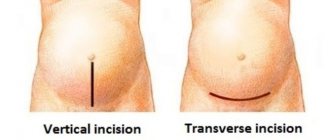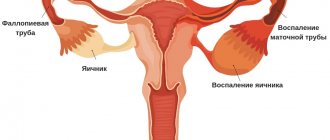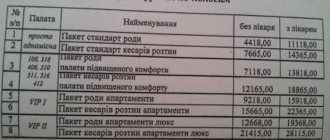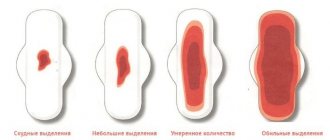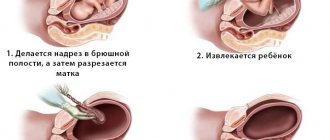Consequences for a child after a cesarean section are rarely recorded, but disturbances in the baby’s development, both physical and psychological, are possible. Often, “Caesarean babies” are diagnosed with problems in the functioning of the digestive and respiratory systems; autistic features without mental retardation, hyperactivity, weak physical development, low immunity (frequent colds, rapid transition of acute pathology into a chronic form) can be detected.
It is possible to reduce the severity of the consequences after a CS for a child only with the help of doctors, having discussed with them in advance such issues as early breastfeeding of the newborn, transfer of the baby immediately after removal from the uterus to the mother or father.
Breathing problems in a baby after a caesarean section
When the fetus is in the womb, its lungs do not perform respiratory function. The baby receives the required amount of oxygen through the umbilical cord, while the lungs are filled with amniotic fluid at this time.
During a natural birth, fluid is completely expelled from the baby's lungs as it passes through the birth canal.
Amniotic fluid is replaced by air, and the child begins to breathe on his own.
In the case of a cesarean section, fetal fluid sometimes remains in the lungs, preventing the respiratory system from beginning full activity.
This phenomenon is called fetal fluid retention syndrome. In healthy caesareans, amniotic fluid can be absorbed into the lung tissue over time.
And in those babies whose bodies are weakened at the time of birth, the fluid is retained and becomes a favorable environment for the development of infections.
With accompanying factors such as prematurity or other developmental pathologies in the child, this syndrome can cause the development of diseases of the respiratory system (pneumonia, pulmonary edema, and bronchial asthma).
Some babies after a cesarean section also experience rapid breathing that is intermittent.
Interesting! Epidural anesthesia - advantages and disadvantages
This happens because the child’s lungs in the first days of life are not able to fully supply his body with oxygen, since they simply cannot cope with such a load.
Particular problems with the functioning of the respiratory system may arise in those children who were influenced by general anesthesia used during surgery.
If a child is born with signs of analgesic action, he is urgently connected to an artificial respiration apparatus.
Babies who have breathing problems at birth need breathing exercises in the first year of life, which helps strengthen the lungs and is also a good prevention of respiratory diseases.
There are also contraindications to caesarean section.
This:
1) Death of the fetus in the womb
2) Pathologies of the fetus that threaten its life
READ The dangers of smoking during early pregnancy. Dangers and Risks
3.Anesthesia.
Anesthesia is selected by the doctor and the patient, and the pros and cons are weighed. As a result, the doctor helps you choose the optimal anesthesia option.
1) Epidural anesthesia.
It is not recommended to use it during emergency operations, due to the fact that the effect of the drug occurs within 15-30 minutes. The injection is injected into the intervertebral space while sitting or lying on the side, then a catheter is attached, with the help of which the anesthetic enters the body during the entire operation.
Indications for use: gestosis, diseases of vital organs (kidneys, heart), diabetes mellitus, hypertension and other diseases.
This anesthesia should not be used for: hypotension, low blood clotting, infant hypoxia, problematic spine.
Postpartum sensations: pain in the back and head, muscle tremors in the legs. Consequences for the fetus: disturbances in heartbeat and breathing, oxygen starvation.
2) Spinal anesthesia.
The time of onset of action and the possibility of transition to general anesthesia wins over the previous one. Pain relief begins within 5-10 minutes. Can also be used for emergencies.
The indications are the same as for epidural anesthesia. The contraindications are slightly different: dehydration, anemia (poor clotting), intracranial hypertension, allergies to injected medications, fetal hypoxia.
Birth injuries during cesarean section
It is believed that during natural childbirth the baby is at greater risk of experiencing birth trauma.
However, during a cesarean section, the baby is also not immune from damage, especially if it is difficult to remove from the uterus.
Sometimes, when the incision is not enough to extract the fetus, the doctor is forced to pull the baby by the head.
This can cause damage to the spinal cord and spine, as well as local dislocation of the vertebrae (most often the cervical or thoracic spine).
The percentage of injuries associated with fractures of the bones of the shoulder girdle (clavicle, scapula) during cesarean section is much lower, but isolated cases still occur.
Joint injuries, which can also occur during cesarean section in some cases, lead to obstetric paralysis and weakened muscle tone.
The most common injury is dislocations and fractures of the child's humerus during mechanical removal.
This situation is not critical: with regular training in special developmental gymnastics, the motor activity of the damaged joint will be restored, and the baby will not be at all different from his healthy peers.
In some cases, children are injured directly during an incision on the uterus. During the operation there is a risk of cutting the baby's soft tissues.
Such wounds are rarely deep and, as a result, dangerous for the child’s life. They are quickly treated with an antiseptic and heal completely within a few weeks.
Negative effects of the procedure on the baby’s health
Despite the many positive aspects of a cesarean section, neonatologists do not recommend resorting to it at will. We should not forget that this is a surgical operation, in which there is always a risk of complications. During the procedure, the following problems arise that can affect the baby's development:
An important feature of obstetrics via cesarean section, which can affect the development of the child, is the lack of communication between mother and baby in the first minutes. Doctors do not put the baby on the mother’s breast, separating them for a day. Many women note that they experience postpartum depression more often and their desire to care for the baby decreases. Such children are more excited, irritable, and their sleep and wakefulness patterns are disturbed.
Dysbacteriosis in children born by cesarean section
One of the disorders that most often occurs in babies born after a cesarean section is dysbacteriosis - a change in the normal microflora of the stomach and intestines.
This is due to the fact that, without passing through the birth canal, the baby does not receive the necessary bacteria from the mother.
When the fetus is in the womb, its gastrointestinal tract is sterile - the microflora is formed already in the first hours after birth.
In children born naturally, the number of lactobacilli in the stomach is higher than in caesareans. Accordingly, the latter are less protected from infectious diseases of the gastrointestinal tract.
Also, food allergies are more common in caesarean babies, which is something parents should remember when introducing the first complementary foods. In this case, you should be especially careful when choosing products for your baby’s first courses.
Why is caesarean section dangerous for the mother?
Since a caesarean section is a surgical intervention, complications are possible both during the operation itself and after it. If a woman has already undergone a caesarean section, then with each subsequent operation the risks to her life and health increase.
During surgery, there is a possibility of injury to the bladder, ureters, intestines, nerve fibers and vessels adjacent to the uterus. Infectious, thromboembolic (associated with blockage of blood vessels by a blood clot) complications and side effects associated with anesthesia cannot be excluded.
After a cesarean section, the uterus contracts worse than after a natural birth, so there is a risk of bleeding. After surgery, problems with urination, constipation, and leg pain often occur. The danger of a cesarean section for the mother is also the possibility of sutures coming apart and postoperative wound infection.
Scar tissue and post-surgical adhesions can cause chronic pain and prevent future conception.
In order to minimize the risk of postoperative complications, you need to follow the doctor’s recommendations on suture care, lifestyle, diet, and ask your doctor in case of any symptoms you should immediately seek medical help.
Damage to the nervous system in children after cesarean section
All injuries to the nervous system in newborns are usually associated with hypoxia (lack of oxygen, temporary suffocation) during childbirth.
Interesting! Rapid labor: what is the danger?
With short-term oxygen starvation, changes in the child’s brain associated with impaired blood circulation in the brain tissue are reversible.
Hypoxia, which lasts quite a long time and is repeated repeatedly, can cause the death of nerve cells.
Hypoxia can also be caused mechanically, for example, due to compression of the respiratory tract by the umbilical cord.
Hypoxia can also occur due to the effects of painkillers, which are always used during surgery.
Epidural anesthesia, produced by injecting a drug into a woman's spinal canal, is characterized by a decrease in blood pressure in the mother.
This suggests that the natural blood circulation in the tissues of the placenta is disrupted, and the child, still in the womb, stops receiving oxygen.
That is why, when administering epidural anesthesia, doctors must act quickly to prevent irreversible damage to the child’s brain tissue.
However, among all types of anesthesia, general anesthesia is the most dangerous for the child, as it enters the mother’s blood and, accordingly, the baby’s blood.
A child under the influence of medications may be born drowsy, lethargic, with significantly reduced muscle tone and the absence of manifestations of innate reflexes.
The toxic effect of painkillers is also expressed in the inhibition of the cardiovascular and respiratory systems, and changes in the acid-base balance.
The cause of birth injuries associated with the central nervous system may also be increased intracranial pressure in the child. Unfortunately, this phenomenon is observed in caesareans somewhat more often than in babies born naturally.
The fact is that without going through the birth canal on their own, children simply do not have time to prepare for birth.
Without warning, the child moves from one familiar environment to another.
As a result of a sharp change in pressure, barotrauma occurs.
This phenomenon can negatively affect the psychomotor development of the child. There is a risk that a baby who was diagnosed with intracranial pressure at birth will begin to hold his head, sit, crawl and speak later than expected.
At a later age, such children may suffer from headaches more often than usual, faint, and be sensitive to changes in weather conditions.
Damage to the baby's spinal cord due to mechanical trauma to the spine also leads to disturbances in the functioning of the central nervous system.
The main symptoms of damage to the nervous system can be both excessive excitement (restlessness, increased muscle tone, the child actively moves his arms and legs) and depression (low motor activity, lack of reflexes inherent in newborns).
Disadvantages of the procedure
There is an opinion that a caesarean section negatively affects the general psychological state of the mother. Afterwards, the risk of developing depression increases. However, its likelihood is minimized if the mother has frequent contact with the child. Psychologists say that the situation is observed against the backdrop of the incompleteness of the process logically. This is why a woman cannot properly establish a connection with her baby.
If the expectant mother says: “I want a cesarean!”, then she must understand that after the operation she will have to limit herself in physical activity.
This can be quite difficult, because during this period you need to constantly care for the newborn. Additional time will need to be allocated for wound care.
After surgery, the body takes longer to recover than during normal childbirth. A woman will have to face a number of serious restrictions that will make her life more difficult.
The main consequences of CS are that the child should not be picked up or held in an upright position for a long time.
If the baby is heavy, then during the first month the mother will definitely need constant help from loved ones.
The question of why caesarean is bad is easy to answer. A woman will have to give up lifting heavy objects and sudden movements. All sexual relations will have to be put aside for a while.
After the operation, the patient will continue to experience pain in the lower abdomen for some time. That is why you will have to completely abandon all overly active actions.
The surgery will leave a scar for life. Additionally, it should be noted that only after a few years it will become less noticeable.
Those who know everything about caesarean section note that the operation worsens overall health. Today, the manipulation requires the administration of anesthesia. It can be general or epidural. In any case, after its effect ends, the woman in labor will have to leave.
Quite often during this period the patient complains of severe dizziness and nausea. After this period ends, she also begins to suffer from pain in the wound.
Some women find it difficult to answer which is more painful. Tearing and cutting fabric are essentially the same thing, so the sensations are similar.
It is not recommended to choose a caesarean section solely out of fear. However, the interests of the child must also be taken into account. The operation will also certainly affect his body.
The pros and cons for the child should also be considered. There is a misconception that through a caesarean section he will be able to avoid pain and fear.
However, surgeons also do not give him the opportunity to independently prepare for the new conditions of external life.
During labor, his breathing and heart begin to function correctly. The circulatory system has time to independently adapt to the new temperature regime.
According to experts, thanks to this, the baby will experience less discomfort in the future.

